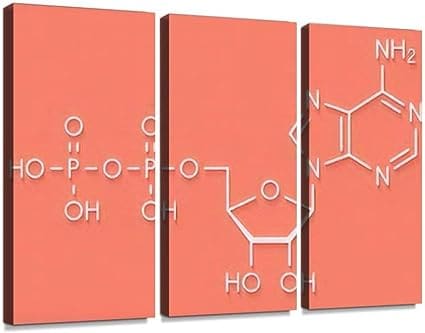Definition
ADP, or Adenosine Diphosphate, is an organic compound that plays a crucial role in the energy transfer within cells.
Expanded Explanation
During cellular metabolism, ATP (adenosine triphosphate) breaks down into Adenosine Diphosphate (ADP) and inorganic phosphate. In this process, cells use ATP’s stored energy and generate ADP as a byproduct.
Importance
ADP plays a pivotal role in cellular metabolism and energy transfer. When it converts to ATP, it offers a primary energy source for cellular processes. Therefore, gaining an understanding of ADP is key to comprehending cellular function at a molecular level.
Context and Usage
ADP is commonly discussed in the context of cellular respiration and energy production. It is a key player in the process of phosphorylation, where it gains a phosphate group to become ATP.
Examples
- Example 1: During exercise, muscle cells quickly break down ATP to harness energy, resulting in ADP. Subsequently, the body strives to transform ADP back into ATP, effectively replenishing the energy reserves.
- Example 2: In photosynthesis, plants convert light energy into chemical energy stored in ATP. The generated ATP is then used in various cellular activities, producing ADP as a byproduct.
Understanding ADP (Adenosine Diphosphate)
A common misconception is that ADP only acts as an energy carrier. In reality, ADP also plays roles in signal transduction and DNA synthesis.
Related Glossary Terms
- ATP (Adenosine Triphosphate): ATP is the molecule that stores energy for almost all metabolic processes. ADP is formed when ATP is broken down.
- Phosphorylation: This is the process by which ADP is converted back into ATP.
Visual Aid
External Resources
- ASH Clinical News: This article from the American Society of Hematology’s journal “Blood” explores the role of adenosine diphosphate (ADP) in generating thromboxane A2 in human platelets. The study reveals that this process requires coordinated signaling through integrin αIIbβ3 and ADP receptors. The findings contribute to understanding how these mechanisms may play a role in hemostasis and pathophysiological arterial thrombosis.
- Publishing: This article from the Organic & Biomolecular Chemistry journal of the Royal Society of Chemistry (RSC Publishing) discusses the selective sensing of adenosine monophosphate (AMP) over adenosine diphosphate (ADP), adenosine triphosphate (ATP), and inorganic phosphates. The study utilized gold nanoparticles containing zinc(ii)-dipicolylamine. These nanoparticles aggregated in water/methanol when in the presence of nucleotides and zinc(II) nitrate, allowing for the detection of these substances. This novel approach may provide a new way to sense AMP in an aqueous environment, even in the presence of other nucleotides and inorganic anions.
Related Articles
- Understanding Glycolysis End Products: The Key to Energy Production: delves deep into glycolysis, a biochemical process. It explains the breakdown of glucose into molecules like ATP, NADH, and pyruvate. Furthermore, the article sheds light on the roles these molecules play in our body. Finally, it discusses how this process’s efficiency influences our health, wellness, and diseases like diabetes and cancer.
- Why is ADP Important in Glycolysis?: Explore the crucial role of ADP in glycolysis, a fundamental process that powers life at a cellular level, and discover how it impacts our overall health and well-being.
